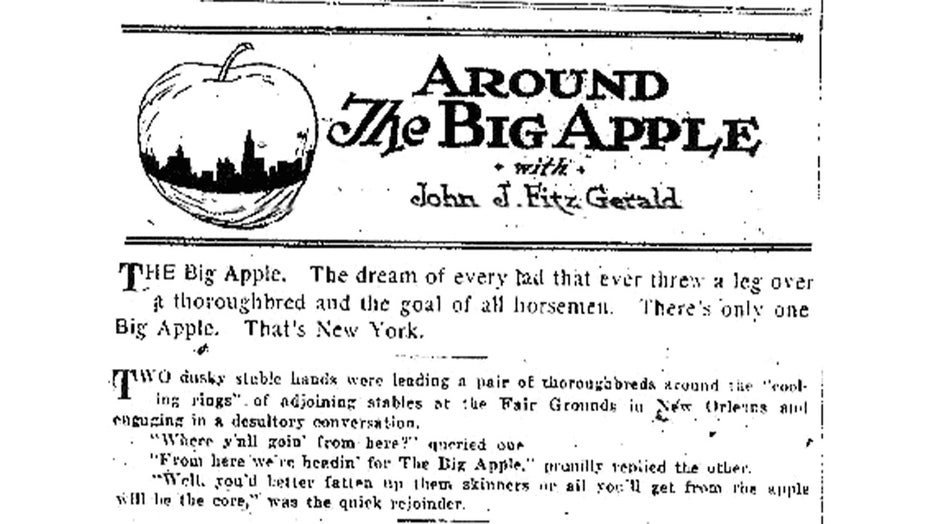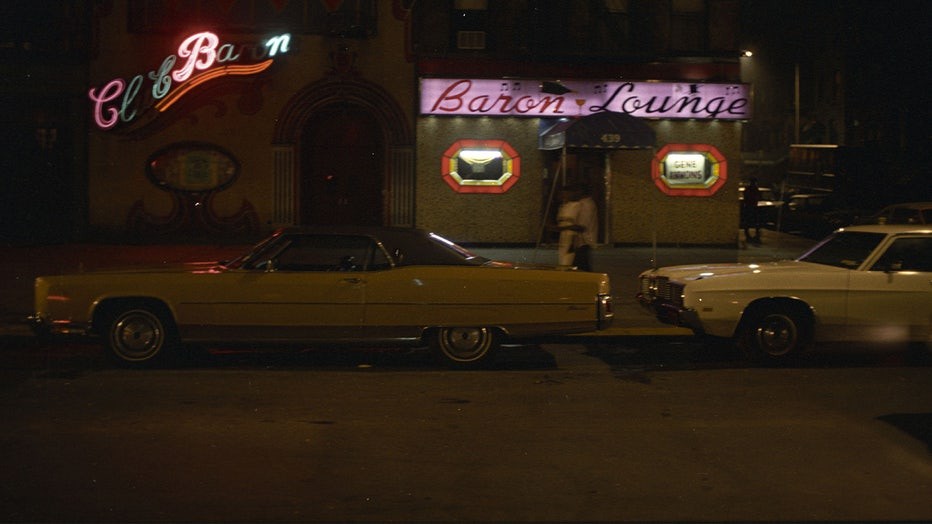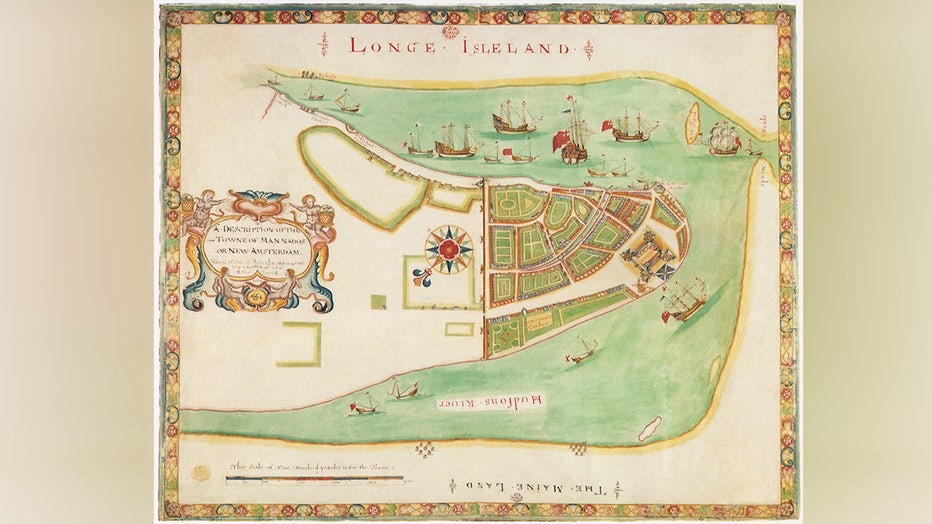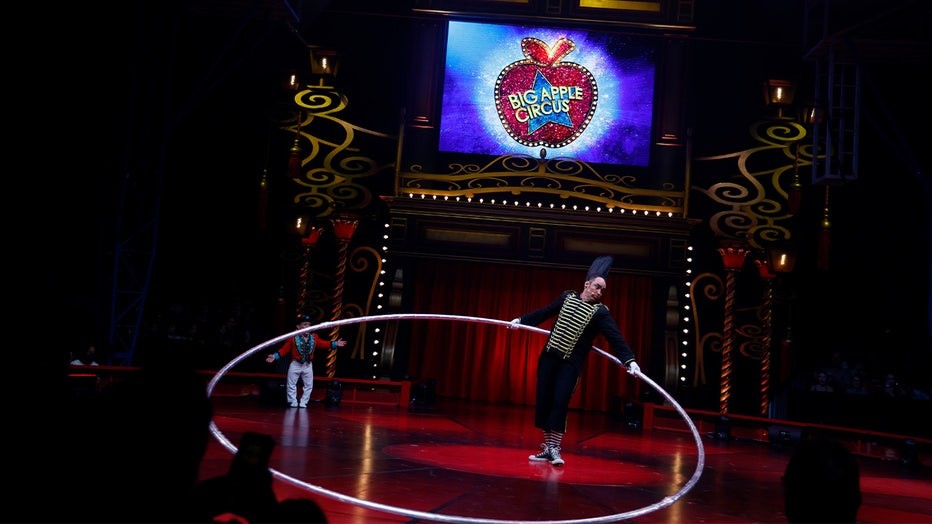Why Is New York The Big Apple? This iconic nickname, synonymous with the city that never sleeps, carries a rich history and captivating story. Join WHY.EDU.VN as we explore the origins, evolution, and enduring appeal of this famous moniker, uncovering its roots in horse racing, jazz culture, and a clever tourism campaign, exploring its deeper meaning and cultural impact. Learn about the nickname, NYC history, and the tourism campaign.
1. The Genesis of “The Big Apple”: Horse Racing Roots
The story of how New York City earned the nickname “The Big Apple” begins not amidst skyscrapers and bustling streets, but on the horse racing tracks of the early 20th century. Understanding this origin requires delving into the language and culture of the racing world at that time.
1.1. “Big Apple” as the Ultimate Prize
In the 1920s, the term “apple” was used colloquially to refer to racetracks. However, not all “apples” were created equal. The “big apples” were the premier racing venues, offering the largest purses and attracting the most skilled jockeys and horses. These were the tracks in and around New York City, where the stakes were highest, and the competition fiercest.
- Metropolitan Area Tracks: New York City’s area racetracks, including Aqueduct, Belmont, and Jamaica, represented the pinnacle of horse racing in the United States.
- Desirable Destination: For jockeys and others involved in the racing industry, “going to the Big Apple” meant striving for the ultimate success and recognition in their field.
1.2. John J. Fitz Gerald: The Man Who Popularized the Nickname
While the term “Big Apple” was already in use within racing circles, it was a sportswriter named John J. Fitz Gerald who brought it to the broader public. Fitz Gerald wrote a column for the New York Morning Telegraph in the 1920s.
- Inspiration from New Orleans: While in New Orleans, Fitz Gerald overheard African American stablehands using the term “Big Apple” to refer to New York City’s racetracks.
- “Around the Big Apple”: Captivated by the term, Fitz Gerald adopted it for his column, titled “Around the Big Apple,” which covered the New York horse racing scene.
1.3. From Racing to Wider Usage
Fitz Gerald’s column helped to spread the nickname “Big Apple” beyond the confines of the horse racing world. However, it wasn’t until later that the term became widely associated with New York City as a whole.
- Early Association: Initially, the “Big Apple” primarily signified the allure and prestige of New York’s racing industry.
- Gradual Expansion: Over time, the term began to symbolize the city’s broader appeal as a center of opportunity, excitement, and ambition.
2. The Jazz Age and the “Big Apple” Nickname
The roaring twenties brought jazz music to the forefront of American culture. This era was characterized by economic prosperity, social change, and a flourishing arts scene. During this time, the “Big Apple” nickname found a new resonance within the jazz community.
2.1. New York City: A Hub for Jazz Musicians
New York City, particularly Harlem, became a magnet for jazz musicians from across the country. The city offered a vibrant nightlife, numerous performance venues, and a chance to collaborate with some of the most talented musicians in the world.
- Harlem Renaissance: Harlem was a cultural mecca for African Americans, fostering creativity and innovation in music, literature, and art.
- Jazz Clubs: Clubs like the Cotton Club and the Savoy Ballroom provided platforms for jazz musicians to showcase their talents and build their reputations.
2.2. “Big Apple” as the Ultimate Stage
For jazz musicians, New York City represented the pinnacle of success. It was the place where dreams could be realized, and where careers could be made. The “Big Apple” became synonymous with opportunity, recognition, and the chance to reach a wider audience.
- Premier Venue: Just as the “Big Apple” racetracks attracted the best jockeys, New York City’s jazz clubs drew the most talented musicians.
- Musical Compositions: Jazz musicians began incorporating the “Big Apple” into their songs, further popularizing the nickname.
2.3. The “Big Apple” Dance Craze
In the 1930s, a new dance craze called the “Big Apple” swept the nation. Originating in Harlem, the dance was a joyful and energetic expression of African American culture.
- Nightclub in Harlem: A nightclub named “Big Apple” opened in Harlem in 1934, becoming a popular spot for dancers and music lovers.
- National Phenomenon: The “Big Apple” dance became a national sensation, further cementing the nickname’s association with New York City.
3. The Tourism Campaign: Officially Embracing “The Big Apple”
Despite its growing popularity, the “Big Apple” nickname wasn’t officially embraced by New York City until the 1970s. In response to a period of economic hardship and a negative image, the city launched a tourism campaign to revitalize its reputation.
3.1. Addressing a Negative Image
By the late 1960s, New York City was facing numerous challenges, including rising crime rates, urban decay, and a declining economy. As a result, the city’s image suffered, and tourism declined.
- “Fun City”: An earlier effort to rebrand New York as “Fun City” with a campaign was launched by Mayor John Lindsay.
- Economic Hardship: The city needed to restore its appeal and attract visitors and investment.
3.2. Charles Gillett and the New York Convention and Visitors Bureau
Charles Gillett, president of the New York Convention and Visitors Bureau, recognized the potential of the “Big Apple” nickname to help turn the city’s image around. He believed that the term evoked a sense of excitement, opportunity, and vibrancy.
- Enthusiasm: Gillett, a jazz enthusiast, aimed to revive the city’s former glory by officially adopting the moniker “Big Apple.”
- Advertising Executive: Gillett enlisted the expertise of advertising executive Bill Phillips to develop a marketing campaign centered around the “Big Apple” theme.
3.3. The “Big Apple” Campaign: A Resounding Success
The “Big Apple” campaign was launched in 1971 and quickly gained momentum. The campaign featured red apples in its promotional materials, aiming to create a positive and welcoming image of the city.
- Red Apples: Red apples were showcased to attract visitors, intending to present a vibrant and cheerful image.
- T-Shirts, Pins, and Stickers: The campaign produced T-shirts, pins, and stickers featuring the “Big Apple” logo, which became popular souvenirs and symbols of city pride.
- Celebrity Endorsements: Celebrities like New York Knicks legend Dave DeBusschere helped promote the campaign.
- “Take a Bite Out of the Big Apple”: The campaign’s slogan, “Take a Bite Out of the Big Apple,” invited tourists to experience all that New York City had to offer.
4. Why “The Big Apple” Endures: Symbolism and Cultural Impact
The “Big Apple” nickname has stood the test of time, remaining a beloved and recognizable symbol of New York City. Its enduring appeal lies in its ability to capture the city’s essence and evoke a range of positive associations.
4.1. Symbolizing Opportunity and Ambition
The “Big Apple” represents the idea that New York City is a place where dreams can come true. It’s a place where people from all walks of life come to pursue their ambitions, whether in business, the arts, or any other field.
- Melting Pot: New York City is a diverse and cosmopolitan city, attracting people from all over the world.
- Center of Innovation: The city is a hub for innovation and creativity, driving progress in various industries.
4.2. Evoking Excitement and Energy
The “Big Apple” nickname conveys a sense of excitement and energy, reflecting the city’s fast-paced and dynamic atmosphere. New York City is a place where something is always happening, where there’s never a dull moment.
- The City That Never Sleeps: New York City is known for its 24/7 culture, with endless options for entertainment, dining, and nightlife.
- Cultural Hub: The city is home to world-class museums, theaters, and music venues, offering a rich and diverse cultural experience.
4.3. A Universally Recognized Symbol
The “Big Apple” nickname is recognized and understood around the world. It’s a shorthand way of referring to New York City, instantly conjuring up images of skyscrapers, yellow cabs, and bustling streets.
- Global Icon: New York City is a global icon, representing the United States on the world stage.
- Tourism Magnet: The city attracts millions of tourists each year, drawn by its iconic landmarks, cultural attractions, and vibrant atmosphere.
5. Beyond the Nickname: Exploring New York City’s Identity
While the “Big Apple” nickname is a significant part of New York City’s identity, it’s important to remember that the city is far more than just a nickname. New York City is a complex and multifaceted metropolis with a rich history, diverse culture, and unique character.
5.1. A City of Neighborhoods
New York City is made up of five boroughs, each with its own distinct neighborhoods and communities. From the brownstone-lined streets of Brooklyn to the vibrant cultural enclaves of Queens, each neighborhood has its own story to tell.
- Manhattan: The heart of New York City, home to iconic landmarks like Times Square, Central Park, and the Empire State Building.
- Brooklyn: A diverse borough known for its arts scene, trendy restaurants, and historic neighborhoods.
- Queens: The most diverse borough in New York City, with a vibrant mix of cultures and cuisines.
- The Bronx: Home to the New York Yankees, the Bronx Zoo, and a thriving arts community.
- Staten Island: A more suburban borough with beautiful parks, beaches, and historic sites.
5.2. A Cultural Melting Pot
New York City is a melting pot of cultures, with people from all over the world calling the city home. This diversity is reflected in the city’s cuisine, music, art, and traditions.
- Ethnic Enclaves: Neighborhoods like Chinatown, Little Italy, and Koreatown offer a taste of different cultures.
- Museums and Cultural Institutions: New York City is home to world-class museums like the Metropolitan Museum of Art, the Museum of Modern Art, and the American Museum of Natural History.
5.3. A City of Constant Change
New York City is a city that is constantly evolving and reinventing itself. From the rise of new industries to the changing demographics of its population, the city is always in flux.
- Technological Innovation: New York City is becoming a major hub for technology companies, attracting talent and investment from around the world.
- Sustainability Initiatives: The city is committed to sustainability and is implementing initiatives to reduce its carbon footprint and improve the quality of life for its residents.
6. New York City’s Previous Names: A Historical Perspective
Before it was known as the “Big Apple” or even New York City, the area had a different name and a different identity. Exploring the city’s previous names provides valuable insights into its history and evolution.
6.1. New Amsterdam: The Dutch Colonial Settlement
In 1624, Dutch settlers established a colony called New Amsterdam on the southern tip of Manhattan Island. The colony was named after Amsterdam, the capital of the Netherlands.
- Dutch West India Company: New Amsterdam was established by the Dutch West India Company as a trading post.
- Fur Trade: The Dutch were heavily involved in the fur trade, which was a major source of revenue for the colony.
6.2. A Map of New Amsterdam in 1664
A map of New Amsterdam from 1664 provides a glimpse into what the settlement looked like during the Dutch colonial period. The map shows the layout of the streets, buildings, and fortifications.
- Wall Street: Wall Street was originally the location of a wall built by the Dutch to protect the colony from attack.
- Battery Park: Battery Park was originally a military installation.
6.3. New York: The English Takeover
In 1664, the English took control of New Amsterdam and renamed it New York in honor of the Duke of York, who later became King James II of England.
- Anglo-Dutch Wars: The English takeover of New Amsterdam was part of a series of conflicts between England and the Netherlands.
- Strategic Location: The English recognized the strategic importance of New York’s location as a port city.
7. The Enduring Appeal: Why New York Still Matters
Despite the challenges it has faced over the years, New York City continues to be a global center of culture, commerce, and innovation. Its enduring appeal lies in its ability to adapt and reinvent itself while remaining true to its core values.
7.1. A City of Resilience
New York City has overcome numerous challenges throughout its history, including economic downturns, natural disasters, and terrorist attacks. The city’s resilience is a testament to the strength and determination of its people.
- September 11 Attacks: The city’s response to the September 11 attacks demonstrated its resilience and unity.
- Hurricane Sandy: New York City bounced back from the devastation of Hurricane Sandy, rebuilding its infrastructure and communities.
7.2. A Beacon of Hope
New York City continues to be a beacon of hope for people from all over the world who come to the city seeking opportunity and a better life. The city’s openness and diversity make it a welcoming place for immigrants and refugees.
- Ellis Island: Ellis Island, once the gateway for millions of immigrants to the United States, is a symbol of New York City’s role as a welcoming place for newcomers.
- Immigrant Communities: New York City is home to vibrant immigrant communities that contribute to the city’s cultural richness.
7.3. A Source of Inspiration
New York City has inspired countless artists, writers, and filmmakers. The city’s energy, diversity, and iconic landmarks have made it a popular subject for creative expression.
- Literary Hub: New York City has been home to many famous writers, including F. Scott Fitzgerald, Ernest Hemingway, and Edith Wharton.
- Filming Location: New York City has been the backdrop for countless movies and television shows.
8. Deeper into the Nickname: The Significance of “Apple”
To understand the full meaning of “The Big Apple,” it is important to consider the symbolism of the apple itself. Throughout history, the apple has been associated with a variety of concepts, including knowledge, temptation, and abundance.
8.1. Apple as a Symbol of Knowledge
In many cultures, the apple is seen as a symbol of knowledge and learning. This association is rooted in the biblical story of Adam and Eve, in which the forbidden fruit from the Tree of Knowledge is often depicted as an apple.
- Education: The apple has become a common symbol of education, often given to teachers as a token of appreciation.
- Wisdom: The phrase “an apple a day keeps the doctor away” suggests that eating apples can promote good health and wisdom.
8.2. Apple as a Symbol of Temptation
The apple can also represent temptation and desire. This association is linked to the story of Adam and Eve, in which the apple represents the allure of forbidden knowledge.
- Allure: The “Big Apple” nickname may suggest that New York City is a place of temptation, where people are drawn by the promise of excitement, opportunity, and pleasure.
- Excess: The nickname can also imply that New York City is a place of excess, where people are encouraged to indulge in their desires.
8.3. Apple as a Symbol of Abundance
In some cultures, the apple is a symbol of abundance and prosperity. This association is based on the apple’s association with harvest and the bounty of nature.
- Wealth: The “Big Apple” nickname may suggest that New York City is a place of wealth and prosperity, where people can achieve financial success.
- Opportunity: The nickname can also imply that New York City is a place of abundant opportunity, where people can find work, start businesses, and pursue their dreams.
9. The Big Apple Today: The Nickname in Modern Culture
The “Big Apple” nickname continues to be used widely in modern culture, appearing in everything from advertising campaigns to song lyrics. The nickname’s continued popularity is a testament to its enduring appeal and its ability to capture the essence of New York City.
9.1. Advertising Campaigns
Many advertising campaigns have used the “Big Apple” nickname to promote New York City as a tourist destination. These campaigns often feature images of iconic landmarks, such as the Empire State Building and the Statue of Liberty.
- Tourism Promotion: The “Big Apple” nickname is used to attract tourists to New York City.
- Branding: Companies use the “Big Apple” nickname to associate their products and services with New York City’s image of excitement, opportunity, and success.
9.2. Song Lyrics
The “Big Apple” nickname has been featured in numerous songs, often used to evoke a sense of excitement and energy. These songs celebrate New York City as a place where dreams can come true.
- Musical Inspiration: New York City has been a source of inspiration for musicians of all genres.
- Cultural References: The “Big Apple” nickname is used to create a sense of place and to connect with listeners who are familiar with New York City’s culture.
9.3. Popular Culture
The “Big Apple” nickname is frequently used in popular culture, appearing in movies, television shows, and books. The nickname helps to create a sense of familiarity and to connect with audiences who are familiar with New York City.
- Setting: New York City is a popular setting for movies and television shows.
- Symbolism: The “Big Apple” nickname is used to symbolize New York City’s unique character and its place in the American imagination.
10. The Future of the Big Apple: Adapting to Change
As New York City continues to evolve, the “Big Apple” nickname will likely continue to adapt and change as well. The nickname will likely reflect the city’s changing demographics, its evolving economy, and its ongoing efforts to address challenges such as climate change and inequality.
10.1. A City of Innovation
New York City is becoming an increasingly important center for innovation, with new companies and industries emerging all the time. The “Big Apple” nickname may come to represent the city’s role as a hub for creativity and technological advancement.
- Silicon Alley: New York City’s technology sector, known as Silicon Alley, is growing rapidly.
- Entrepreneurship: The city is a popular destination for entrepreneurs and startups.
10.2. A Sustainable City
New York City is committed to sustainability and is working to reduce its carbon footprint and improve the quality of life for its residents. The “Big Apple” nickname may come to represent the city’s efforts to create a more sustainable future.
- Green Initiatives: The city has implemented a number of green initiatives, such as expanding public transportation and promoting energy efficiency.
- Environmental Awareness: New Yorkers are becoming increasingly aware of environmental issues and are taking steps to reduce their impact on the planet.
10.3. A City for Everyone
New York City is working to create a more equitable and inclusive society, where everyone has the opportunity to succeed. The “Big Apple” nickname may come to represent the city’s commitment to social justice and equality.
- Affordable Housing: The city is working to increase the availability of affordable housing.
- Social Programs: New York City offers a wide range of social programs to support its residents.
FAQ: Unveiling More About “The Big Apple”
Here are some frequently asked questions about the “Big Apple” nickname:
| Question | Answer |
|---|---|
| What does the nickname “The Big Apple” mean? | The nickname “The Big Apple” refers to New York City. It symbolizes the city’s allure, opportunity, and status as a major center of culture, commerce, and innovation. |
| How did New York City get the nickname “The Big Apple”? | The nickname originated in the 1920s within the horse racing community, where “Big Apple” referred to New York City’s racetracks. Sportswriter John J. Fitz Gerald popularized the term in his column. In the 1970s, a tourism campaign officially adopted the nickname to revitalize the city’s image. |
| Who popularized the nickname “The Big Apple”? | Sportswriter John J. Fitz Gerald, who wrote a column called “Around the Big Apple” for the New York Morning Telegraph in the 1920s. |
| When did New York City officially adopt the nickname? | In 1971, as part of a tourism campaign led by Charles Gillett, president of the New York Convention and Visitors Bureau. |
| Why did New York City adopt the nickname? | To revitalize the city’s image, which had been tarnished by economic hardship and a negative perception. The “Big Apple” nickname was seen as a way to evoke a sense of excitement, opportunity, and vibrancy. |
| What was New York City called before “The Big Apple”? | Before “The Big Apple,” the area was known as New Amsterdam, a Dutch colonial settlement founded in 1624. |
| Is the “Big Apple” nickname still used today? | Yes, the “Big Apple” nickname is still widely used today, appearing in advertising campaigns, song lyrics, and popular culture. |
| What does the apple symbolize? | The apple can symbolize knowledge, temptation, and abundance, depending on the context. In the case of “The Big Apple,” it evokes a sense of opportunity, excitement, and the allure of New York City. |
| Why does the “Big Apple” continue to endure? | The “Big Apple” nickname has stood the test of time because it captures the city’s essence and evokes positive associations. It symbolizes opportunity, ambition, excitement, and is universally recognized. |
| How has the meaning of the “Big Apple” changed over time? | Initially associated with horse racing, the “Big Apple” expanded to represent the jazz scene and then the city as a whole. Today, it represents New York City’s role as a global center for culture, commerce, and innovation, and its resilience in the face of challenges. |
Conclusion: The Enduring Legacy of “The Big Apple”
The story of why New York is the Big Apple is a captivating journey through the city’s history, culture, and identity. From its humble beginnings in the horse racing world to its official adoption as a tourism slogan, the nickname has evolved and adapted over time, yet its essence has remained the same: New York City is a place of opportunity, excitement, and endless possibilities.
Do you have more burning questions about New York City or any other topic? Visit WHY.EDU.VN today and let our experts provide you with the answers you seek. At WHY.EDU.VN, we are dedicated to providing accurate, reliable, and insightful information to help you understand the world around you. Our team of experts is ready to tackle any question, big or small. Contact us at 101 Curiosity Lane, Answer Town, CA 90210, United States or via Whatsapp at +1 (213) 555-0101. Discover the answers you’ve been searching for at why.edu.vn – where curiosity meets knowledge!




